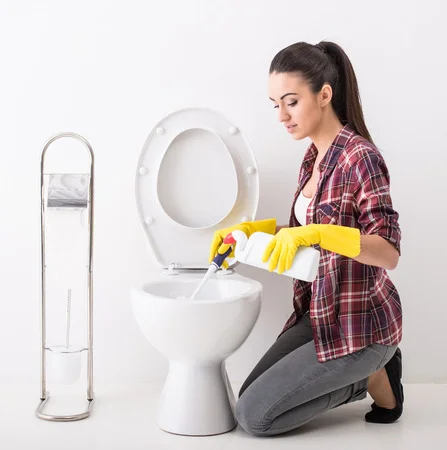It’s no secret that cleaning a toilet tank can be a dirty, smelly job. But it’s also a very important one if you want to keep your toilet running smoothly. Here are four ways to clean your toilet tank – each with its own set of pros and cons.
4 Ways to Clean the Toilet Tank:
Method 1: With Ammonia and Bleach
Pros: This is an effective way to clean your toilet tank because it kills bacteria, which can easily build up in a toilet tank and damage or clog pipes. It is also known to kill mold and mildew, which can lead to bad smells in the bathroom.
Cons: A downside of using this method for cleaning is that bleach and ammonia create poisonous gases when combined, so you’ll need very good ventilation. For people with respiratory problems or sensitivities, this could trigger serious health problems. In addition, too much exposure to bleach can cause dry skin and bleached-out clothing.
Method 2: With Vinegar and Baking Soda

Pros: This is a great way to clean your toilet tank because it cuts grime, smells and mineral build-up. It’s also incredibly cheap and easy!
Cons: A potential downside of using this method for cleaning is that any buildup of minerals in the pipes can react with vinegar or baking soda (even when diluted) and cause fizzing inside the pipes. Over time, this fizzing could damage the plumbing in your house. If you’re concerned about damaging your pipes, use one of the other two methods instead.
Method 3: With Bleach and Water
Pros: Using bleach and water to clean your toilet tank is an effective way to get rid of stains and mineral build-up. Cons: Unfortunately, you’ll need to rinse the tank several times after this method of cleaning because bleach can harm your skin or eyes if it comes into contact with them. If there are kids in the house, another option is best.
Method 4: With Hydrogen Peroxide and Water
Pros: This is the safest way to clean your toilet tank because hydrogen peroxide doesn’t have any harmful effects on humans or pipes.
Cons: The only downside of this method is that it’s not quite as effective at removing stains and residue. You might need to repeat the process a few times before you notice an improvement.
Conclusion
There are 4 ways to clean the toilet tank – each with its own set of pros and cons. The safest way to clean your toilet tank is with hydrogen peroxide and water. The most effective way to clean the toilet tank is by using bleach and water. The cheapest way to clean the toilet tank is with vinegar and baking soda. Finally, the dirtiest way to clean the toilet tank is with ammonia and bleach.
Note: Although both Method 1 (with ammonia and bleach) and Method 2 (with vinegar and baking soda) are used frequently in cleaning bathrooms, they are not recommended for cleaning toilets! Both chemicals are known to damage plumbing, so use caution when deciding whether or not these methods are right for you.

